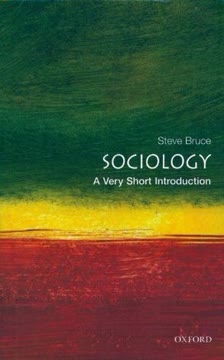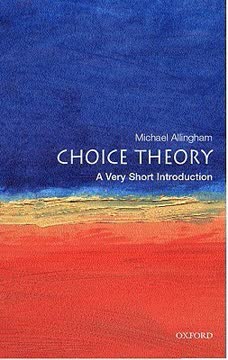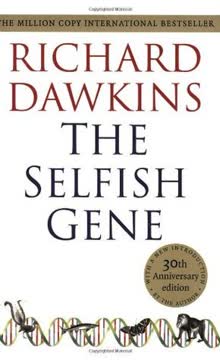Key Takeaways
1. Human evolution is a complex journey from ancient primates to modern humans
All living (aka extant) organisms, that is, animals, plants, fungi, bacteria, and all the types of organisms that lived in the past, are situated somewhere on the branches and twigs of an arborvitae or Tree of Life (TOL).
The evolutionary journey. Human evolution is a fascinating tale that spans millions of years, tracing our lineage from ancient primates to modern Homo sapiens. This journey is best visualized as part of the grand Tree of Life, where humans occupy a small but significant branch. The story begins around 8 million years ago when our ancestors diverged from those of chimpanzees and bonobos.
Key milestones:
- 8-6 million years ago: Last common ancestor of humans and chimpanzees/bonobos
- 4-2 million years ago: Emergence of early hominins (e.g., Australopithecus)
- 2-1 million years ago: Appearance of genus Homo
- 300,000-200,000 years ago: Emergence of anatomically modern humans
Understanding our past. Studying human evolution helps us understand our place in nature, our biological and cultural adaptations, and the forces that shaped our species. It involves multiple scientific disciplines, including paleoanthropology, genetics, archaeology, and geology, working together to piece together the complex puzzle of our origins.
2. Fossil discoveries and dating methods reveal our evolutionary timeline
Fossilization is the term scientists use to describe the changes that occur in bones and teeth during fossilization.
Uncovering our ancestors. Fossil discoveries are crucial for understanding human evolution. These remnants of our ancestors provide tangible evidence of how humans and our close relatives changed over time. However, fossils are rare and often fragmentary, requiring careful excavation, analysis, and interpretation.
Dating techniques:
- Radiometric dating (e.g., potassium-argon, carbon-14)
- Magnetostratigraphy
- Biochronology
- Uranium-series dating
Challenges in interpretation. Dating fossils and interpreting their significance is complex. Researchers must consider factors such as taphonomy (how organisms become fossilized), geological context, and potential biases in the fossil record. Despite these challenges, advances in technology and methodology continue to refine our understanding of human evolutionary history.
3. Early hominins emerged in Africa, adapting to changing environments
Due to the increasing dryness, forests were replaced with open woodland, and areas of grassland began to appear.
African origins. The earliest hominins emerged in Africa between 7 and 4 million years ago. This period was marked by significant climate change, with increasing aridity leading to a shift from dense forests to more open woodlands and grasslands. These environmental changes likely played a crucial role in driving hominin evolution.
Key early hominins:
- Sahelanthropus tchadensis (7-6 million years ago)
- Orrorin tugenensis (6 million years ago)
- Ardipithecus ramidus (4.4 million years ago)
- Australopithecus afarensis (3.9-3 million years ago)
Adaptations and diversity. Early hominins exhibited a mix of ape-like and human-like traits, reflecting their transitional nature. They showed adaptations for both tree-climbing and bipedal locomotion, as well as changes in dentition suggesting shifts in diet. The diversity of early hominin species indicates a complex evolutionary history with multiple lineages coexisting and competing.
4. Archaic and transitional hominins bridge the gap to modern humans
Australopithecus afarensis, with a much more comprehensive fossil record than any of the potential primitive hominins discussed in Chapter 5.
Bridging species. Archaic and transitional hominins represent an important phase in human evolution, bridging the gap between early ape-like ancestors and more human-like species. These hominins showed a mix of primitive and derived traits, providing insight into the gradual evolution of human characteristics.
Key archaic and transitional hominins:
- Australopithecus africanus (3-2 million years ago)
- Paranthropus species (2.7-1.2 million years ago)
- Homo habilis (2.3-1.5 million years ago)
- Homo rudolfensis (2.4-1.8 million years ago)
Evolutionary trends. These species exhibited trends towards increased brain size, reduced jaw and tooth size, and more human-like body proportions. They also show evidence of tool use and meat consumption, suggesting important behavioral and cognitive developments. The coexistence of multiple hominin species during this period indicates a complex evolutionary landscape with various adaptive strategies.
5. Pre-modern Homo species spread across the globe
By at least one million years ago there is evidence of a new type of hominin, Homo erectus, from sites in Africa, China, and Indonesia.
Global expansion. Pre-modern Homo species, particularly Homo erectus, were the first hominins to expand beyond Africa, reaching Asia by at least 1.8 million years ago. This global spread marked a significant milestone in human evolution, demonstrating our ancestors' adaptability to diverse environments.
Key pre-modern Homo species:
- Homo erectus (1.9 million - 100,000 years ago)
- Homo heidelbergensis (700,000 - 200,000 years ago)
- Homo floresiensis (100,000 - 50,000 years ago)
Technological and cognitive advances. These species showed significant advancements in tool-making, with Homo erectus associated with the Acheulean stone tool industry. They also exhibited increased brain size and more human-like body proportions. Evidence suggests they may have used fire and engaged in more complex social behaviors, laying the groundwork for later human cognitive and cultural developments.
6. Neanderthals and Denisovans: Our extinct cousins
Fortunately, other lines of evidence are now available for assessing the taxonomy of the Neanderthals, for researchers have been able to extract both mitochondrial (mtDNA) and nuclear (nDNA) from Neanderthal, and other, fossils.
Close relatives. Neanderthals and Denisovans were our closest extinct relatives, sharing a common ancestor with modern humans around 600,000 years ago. They inhabited Eurasia during the Middle and Late Pleistocene, adapting to cold climates and developing unique cultural and technological traditions.
Key points:
- Neanderthals lived from 400,000 to 40,000 years ago, primarily in Europe and Western Asia
- Denisovans are known mainly from genetic evidence, with limited fossil remains from Siberia
- Both groups interbred with modern humans, contributing to our genetic diversity
Genetic insights. Ancient DNA studies have revolutionized our understanding of these species. They reveal complex patterns of interbreeding between Neanderthals, Denisovans, and modern humans. This genetic legacy continues to influence human biology today, with some Neanderthal and Denisovan genes conferring both advantages and disadvantages to modern populations.
7. Modern Homo sapiens originated in Africa and colonized the world
The predominant message from DNA studies, be it from mtDNA, the Y chromosome, or the rest of the nuclear genome, is that most of the modern human genome originated in Africa.
African origins. Genetic and fossil evidence strongly supports an African origin for modern Homo sapiens, with the earliest anatomically modern human remains dating to around 300,000 years ago in Morocco. The "Out of Africa" hypothesis posits that all non-African populations descend from a small group that left Africa around 60,000-70,000 years ago.
Global dispersal:
- 60,000-50,000 years ago: Arrival in Australia
- 45,000-40,000 years ago: Spread throughout Eurasia
- 15,000-20,000 years ago: Colonization of the Americas
Cultural revolution. The spread of modern humans was accompanied by significant technological and cultural innovations, including advanced stone tools, art, and complex social structures. This period saw the development of diverse human cultures adapted to a wide range of environments, laying the foundation for the global diversity we see today.
8. Ancient DNA revolutionizes our understanding of human evolution
Ancient DNA research has made huge strides.
Genetic time machine. Ancient DNA (aDNA) analysis has transformed our understanding of human evolution, allowing researchers to directly study the genetic makeup of extinct hominins and ancient human populations. This technology provides insights into relationships between species, population movements, and genetic adaptations that were previously impossible to obtain.
Key contributions of aDNA:
- Revealed interbreeding between modern humans, Neanderthals, and Denisovans
- Identified previously unknown hominin groups (e.g., Denisovans)
- Traced population movements and admixture events in recent human history
- Provided insights into the genetic basis of human adaptations
Challenging assumptions. aDNA studies have often challenged or refined hypotheses based on fossil and archaeological evidence. They reveal a more complex picture of human evolution, with multiple lineages interacting and contributing to the modern human gene pool. This underscores the importance of integrating multiple lines of evidence in studying human origins.
9. The future of human evolution research and our species
Researchers will continue to look for additional fossil evidence. Some will continue their work at existing fossil sites, others will look for new locations.
Ongoing research. The field of human evolution is dynamic, with new discoveries and technological advances continually refining our understanding. Future research will likely focus on filling gaps in the fossil record, improving dating methods, and extracting more information from ancient DNA and protein analysis.
Potential future developments:
- Discovery of new hominin species, particularly in understudied regions
- Improved understanding of cognitive and behavioral evolution through interdisciplinary approaches
- Refinement of evolutionary timelines and relationships using advanced dating and genetic techniques
Evolution continues. While cultural and technological factors now play a dominant role in human adaptation, biological evolution continues. Future human evolution may be influenced by factors such as climate change, medical advances, and potentially, genetic engineering. Understanding our evolutionary past provides valuable context for considering the future trajectory of our species.
Last updated:
FAQ
What's "Human Evolution: A Very Short Introduction" about?
- Overview: The book provides a concise exploration of human evolutionary history, focusing on the journey from our earliest ancestors to modern humans.
- Content: It covers the discovery, analysis, and interpretation of fossil hominins, as well as the methodologies used in paleoanthropology.
- Structure: The book is organized into chapters that discuss different stages of human evolution, from early hominins to modern Homo sapiens.
- Objective: It aims to explain how scientists improve our understanding of human evolution and highlight the major gaps in our knowledge.
Why should I read "Human Evolution: A Very Short Introduction"?
- Expert Insight: Written by Bernard Wood, an expert in the field, the book offers authoritative insights into human evolution.
- Accessible Format: As part of the Very Short Introductions series, it is designed to be accessible and engaging for readers new to the subject.
- Comprehensive Overview: It provides a broad overview of human evolution, making it a useful starting point for further study.
- Current Understanding: The book reflects the latest scientific advances and discoveries in the field of human evolution.
What are the key takeaways of "Human Evolution: A Very Short Introduction"?
- Evolutionary Journey: The book outlines the evolutionary journey from early hominins to modern humans, emphasizing key developments and adaptations.
- Scientific Methods: It explains the methodologies used in paleoanthropology, including fossil analysis and dating techniques.
- Human-Animal Connection: The book discusses the interconnectedness of humans with other animals within the Tree of Life.
- Knowledge Gaps: It highlights the major gaps in our understanding of human evolution and the ongoing efforts to fill these gaps.
What are the best quotes from "Human Evolution: A Very Short Introduction" and what do they mean?
- "All living organisms...are situated somewhere on the branches and twigs of an arborvitae or Tree of Life." This quote emphasizes the interconnectedness of all life forms, including humans, within the evolutionary framework.
- "The earliest attempts to use proteins to determine primate relationships were made just after the turn of the century." This highlights the historical development of molecular anthropology and its role in understanding human evolution.
- "The discovery of the chemical structure of the DNA molecule meant that affinities of organisms could be pursued at the level of the genome." This underscores the significance of DNA in tracing evolutionary relationships and understanding human origins.
How does Bernard Wood explain the concept of the Tree of Life in the book?
- Metaphor for Evolution: The Tree of Life is used as a metaphor to describe the evolutionary relationships among all living organisms.
- Branching Patterns: It illustrates how different species, including humans, are connected through branching patterns that reflect their evolutionary history.
- Ancestral Connections: The tree shows how extinct organisms on the branches are our ancestors, while those on branches attached to ours are our close relatives.
- Scientific Framework: The Tree of Life is a central concept in understanding the evolutionary process and the place of humans within it.
What methodologies are discussed in the book for studying human evolution?
- Fossil Analysis: The book covers the analysis of fossil hominins, including their discovery, classification, and interpretation.
- Dating Techniques: It discusses various dating methods, such as radiocarbon dating and potassium-argon dating, used to determine the age of fossils.
- Molecular Biology: Advances in molecular biology, including DNA analysis, are highlighted as crucial tools in understanding evolutionary relationships.
- Imaging Technologies: The use of imaging technologies, like CT scans, is explained as a means to study the internal structures of fossils.
What does the book say about the relationship between humans and other primates?
- Close Relatives: The book explains that chimpanzees and bonobos are the closest living relatives to modern humans.
- Shared Ancestry: It discusses the shared ancestry between humans and other primates, emphasizing the evolutionary connections.
- Morphological Evidence: The book highlights the anatomical similarities and differences between humans and other primates.
- Genetic Insights: It also covers the genetic evidence that supports the close relationship between humans and other primates.
How does Bernard Wood address the gaps in our knowledge of human evolution?
- Acknowledgment of Gaps: The book acknowledges the significant gaps in our understanding of human evolutionary history.
- Ongoing Research: It emphasizes the importance of ongoing research and new discoveries in filling these gaps.
- Methodological Advances: The book discusses how advances in technology and methodology are helping to bridge these knowledge gaps.
- Future Directions: It suggests areas where further research is needed to enhance our understanding of human evolution.
What is the significance of the fossil record in understanding human evolution, according to the book?
- Historical Evidence: The fossil record provides crucial evidence of the physical characteristics and adaptations of early hominins.
- Evolutionary Timeline: It helps establish a timeline of evolutionary events and the emergence of different hominin species.
- Behavioral Insights: Fossils can offer insights into the behavior and lifestyle of early humans, such as tool use and diet.
- Challenges and Biases: The book discusses the challenges and biases in the fossil record, including preservation issues and gaps in the evidence.
How does the book explain the concept of "adaptive radiation" in human evolution?
- Definition: Adaptive radiation refers to the rapid diversification of a species into new forms that exploit different ecological niches.
- Hominin Evolution: The book explains how adaptive radiation played a role in the evolution of hominins, leading to the emergence of various species.
- Environmental Influence: It discusses how changes in the environment created new opportunities for adaptation and diversification.
- Speciation Events: Adaptive radiation is linked to speciation events, where new species arise to fill different ecological roles.
What role does molecular biology play in the study of human evolution, as discussed in the book?
- DNA Analysis: Molecular biology, particularly DNA analysis, is crucial for understanding the genetic relationships between species.
- Evolutionary Insights: It provides insights into the evolutionary history and migration patterns of ancient human populations.
- Resolving Relationships: Molecular techniques help resolve the relationships among hominins and other primates.
- Ancient DNA: The book highlights the significance of ancient DNA in reconstructing the evolutionary history of extinct species.
How does "Human Evolution: A Very Short Introduction" address the future of human evolution?
- Ongoing Evolution: The book discusses the concept of ongoing human evolution and the factors influencing it.
- Cultural Impact: It highlights the impact of cultural evolution and technology on the evolutionary process.
- Genetic Changes: The book explores potential genetic changes and adaptations in response to modern environments.
- Evolutionary Medicine: It introduces the field of evolutionary medicine, which examines how evolutionary history affects human health today.
Review Summary
Human Evolution: A Very Short Introduction receives mixed reviews. Readers appreciate its comprehensive overview of human evolution and fossil analysis methods, but some find it too technical or focused on methodology rather than findings. The book is praised for its clear explanations of current understanding and limitations in the field. However, some readers feel it lacks engaging narrative and bigger-picture implications. Overall, it's considered a solid introduction for those interested in paleoanthropology, though possibly too academic for casual readers.
Very Short Introductions Series Series












Similar Books






Download PDF
Download EPUB
.epub digital book format is ideal for reading ebooks on phones, tablets, and e-readers.




